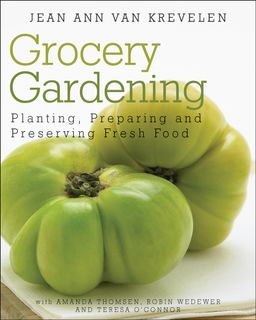A suburban garden in New Jersey. An apartment balcony in California. Acreage in northwest Ohio. These gardeners may enjoy the outdoors in different ways, but they all know plenty about plants. Here are their "must-have" plants for this year...
Like gardening blogs? There's a good chance you've read
Kylee Baumle's Our Little Acre. Her award-winning blog takes place in a rural northwest Ohio garden. Recently, it was awarded not one, but
several 2010 Mouse and Trowel awards.
Somehow this dental hygenist also finds time to write
Gardening by the Book and co-write
Soil Sisters, as well as write for Cool Springs Press GREEN Program. On Twitter, you can find this busy woman at
@OurLittleAcre.
This summer Kylee is thinking about plants "that offer a little out of the ordinary," such as
Toad Lily (Tricyrtis sp.) suitable for Zones 5 to 9
. Toad Lily 'Miyazaki' is shown above, while
Toad Lily 'Tojen' is pictured at the top of this blog post.
These orchid-like flowers bloom in autumn, "when nothing much besides mums and asters are really going to town," says Kylee. "Plus, Toad Lilies come in various colors, and the foliage varies from cultivar to cultivar. Some leaves have spots or stripes. Some are golden in color. And some are traditional green. A particularly nice feature is that they add color to shade gardens and are in the mid-height range."
Her second choice is an edible one ...
corn. "Where I live, in northwest Ohio, corn is as common as the dirt it grows in," explains Kylee. "Summer just wouldn't be summer without sweet corn. My favorite variety is the white and yellow bicolor, but I'm a big fan of the pure white, such as 'Silver Queen.' " (Shown above.)
"In August, I make a meal out of just sweet corn," she says with a laugh. "I slather the corn with butter and salt and can eat six ears or more at a time. Most people gain weight over winter, right? For me, it's in August." (Shown above is 'Ruby Queen' corn, which she grew in 2008.)
Gardening in a smaller space? You still have plenty of options. Just ask
Fern Richardson, who writes the award-winning blog
Life on the Balcony. Also a 2010 Mouse and Trowel award winner, the blog has won praise from
Sunset Magazine and others
. On Twitter, Fern can be found at
@LifeOnTheBlcny.
Some favorite plants Fern likes growing on her California balcony...
The first one is ...
Aeonium. "There are so many interesting varieties of Aeoniums, you really can't go wrong," says Fern. "I particularly like the variegated and black varieties like the one in this picture. Their floral-like rosettes provide year-round interest and ask for only the tiniest bit of attention in return."
"Another favorite is
chocolate mint," says Fern. "This plant is nearly indestructible, and yet so tasty! I love using the leaves in teas, and they're also a yummy addition to banana bread."
When she makes banana bread, Fern adds 2 to 3 tablespoons of dried chocolate mint with the dry ingredients.
In the New York Metropolitan Area, award-winning landscape and design consultant
Susan Cohan is busy managing
Susan Cohan Gardens and serving on the Board of Directors for the Association of Professional Landscape Designers. That is... when she's not writing her thought-provoking blog
Miss Rumphius' Rules or tweeting as
@SusanCohan on Twitter.
Susan admits it's not easy to choose only a few "must-have" plants. But she did agree to provide "two finalists culled from a long list of favorites." As she explains, "I won't give a plant the thumbs up until I've actually grown it. So even from a landscape designer's perspective, both are absolute winners!"
Her first choice is
'Red Romaine' lettuce. The plant really stood out among the rest when she recently designed and planted a large vegetable garden.
"I chose plants based not only on their cool weather preferences," says Susan. "But also for the beauty of their foliage. Unfortunately, the flats were only labeled as 'Red Romaine'. But this unnamed red romaine was my favorite of all the lettuces. It is a striking plant that added a punch of color to a very formal vegetable garden and would look great mixed with ornamentals as well."
Her second choice is the
'Abalone Pearl' peony, shown above.
"The peony has a single clear salmon pink bloom held upright on fernlike foliage," explains Susan. "I hardly ever buy plants for myself anymore. And I even thought about this when I saw the plant in the nursery. But as I was ready to leave, I started to feel remorse at leaving it there. So I had to buy one."
She hasn't regretted her decision yet.
Hear Susan Cohan discuss landscape design (and design in general) on
Nest in Style.
Like this? Don't miss these other stories:
Must-Have Plants
Must-Have Plants (Part II)
Favorite Winter Plants (Maine Containers)
Favorite Winter Plants (Northern Idaho)
Favorite Winter Plants (Canada)
Favorite Winter Plants (North Carolina)
Favorite Winter Plants (Western Washington)
More expert plant suggestions to come soon!




































